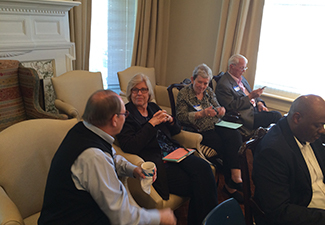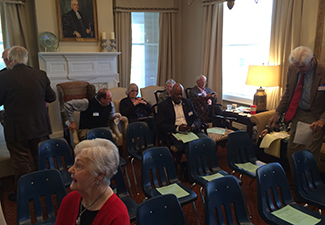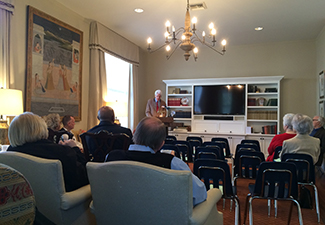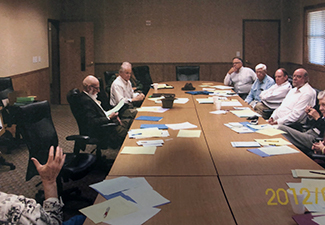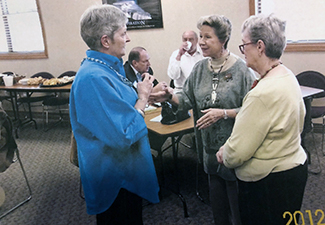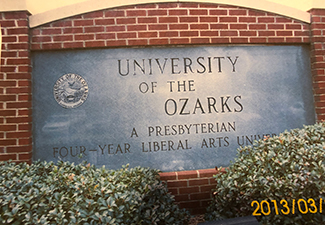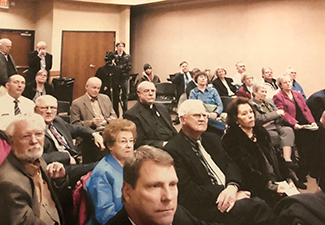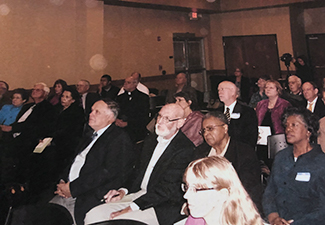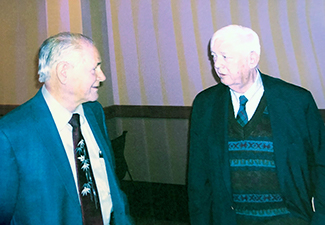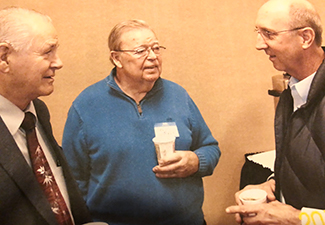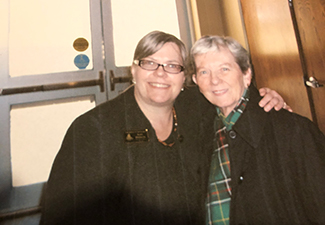In II Corinthians 5:1 Paul writes, “For we know that if the earthly tent we live in is destroyed, we have a building from God, a house not made with hands, eternal in the heavens.” Clearly, he is talking about our earthly life and the life beyond this life.
And yet, the metaphor is an interesting one. While we know that the church is the people, and we know that the early church as the church met in homes, and we don’t want to create idols out of physical buildings, nevertheless for centuries buildings have been set aside for the gathering of God’s people to worship, to learn, to carry out their call to ministry – whatever form that may take. After church buildings have been constructed, there are usually services of dedication in which that space is set aside for the work of the church, the people.
Without wanting to place too much emphasis on church buildings, this column is intended to acknowledge the architectural gifts of those who have contributed to such sacred spaces in the Presbyterian world in the region covered by the PHSSW.
We know of Christopher Wren and how, after the Great London Fire of 1666, he built many of the structures in that city, including St. Paul’s Cathedral (where he is also buried). We know of the architectural gifts of Frank Lloyd Wright and many of the unique buildings he designed in this country, including the Falling Waters house in Pennsylvania and the Guggenheim Museum in New York City.
But one person who has been described as one of this “nation’s best unknown architects” is O’Neil Ford. A Presbyterian born in Grayson County, Texas, Ford received his architectural certification by mail from the International Correspondence Schools of Scranton, Pennsylvania. He is responsible for the design of several significant buildings belonging to Presbyterian institutions. He was the architect for many of the buildings on the campus of Trinity University in San Antonio, including the Margarite B. Parker Chapel (where Ford’s funeral was held). In San Antonio he was also responsible for many of the buildings on the UT-San Antonio campus.
Besides buildings in San Antonio, Denton, Texas, and on the campus of Skidmore College in Saratoga Springs, New York, Ford created the master plan for the re-designed campus of the Presbyterian Pan American School in Kingsville. The friendship between Ford and the school’s president at the time, Sherwood Reisner, bore fruit when the girls’ school in Taft merged with the boys’ school in Kingsville in the late 1950s. The buildings that resulted in this architectural creation led to a feature in the November/December 1997 issue of the magazine, Texas Architect.
Another San Antonio architect, Marvin Eickenroht, was hired to offer a plan for a chapel at Austin Seminary. His suggestion that the chapel have a Gothic style of architecture led to the decision to use the rear tower of Canterbury Cathedral as the model for the front tower of the Seminary chapel. That building is still the symbol and centerpiece of the Seminary.
Finally, many may not be familiar with the name, Abner Cook. Born on March 15, 1814 in North Carolina, Cook was a self-taught architect and general contractor. After doing construction work in Macon, Georgia for 16 years, he moved to Nashville, Tennessee due to the Panic of 1837. Finding little work there, he moved to Texas in 1839. A Presbyterian, Cook was one of the five charter members of the First Presbyterian Church in Austin (May 26, 1850). Cook donated the lots for the church’s building and also designed and built that building in 1851, located at the time at Bois d’Arc (now 7th Street) and Lavaca. The church has since moved twice from that original location and is now has a lovely campus at 8001 Mesa Drive in northwest Austin.
It should be noted that Cook was also the architect of the Governor’s Mansion in Austin, the west wing of the original administration building of the University of Texas (a building which is no longer), and several “Greek Revival” homes in Austin which still stand. In addition, perhaps as an unconscious affirmation of his Calvinist heritage that acknowledged human depravity, he supervised the construction of the state penitentiary in Huntsville.
Many churches have unique designs, some quite simple and others filled with symbols and creative nuances all contribute to a worshipful setting for the people of God – the church. What are some of the unique features of your church building, and how does the building’s architecture reflect the theology of the Reformed tradition? We are grateful for all who contribute to such sacred spaces. The Presbyterian Historical Society of the Southwest encourages everyone to examine and reflect on their church buildings and discover those features that make it an edifice built to the glory of God.

